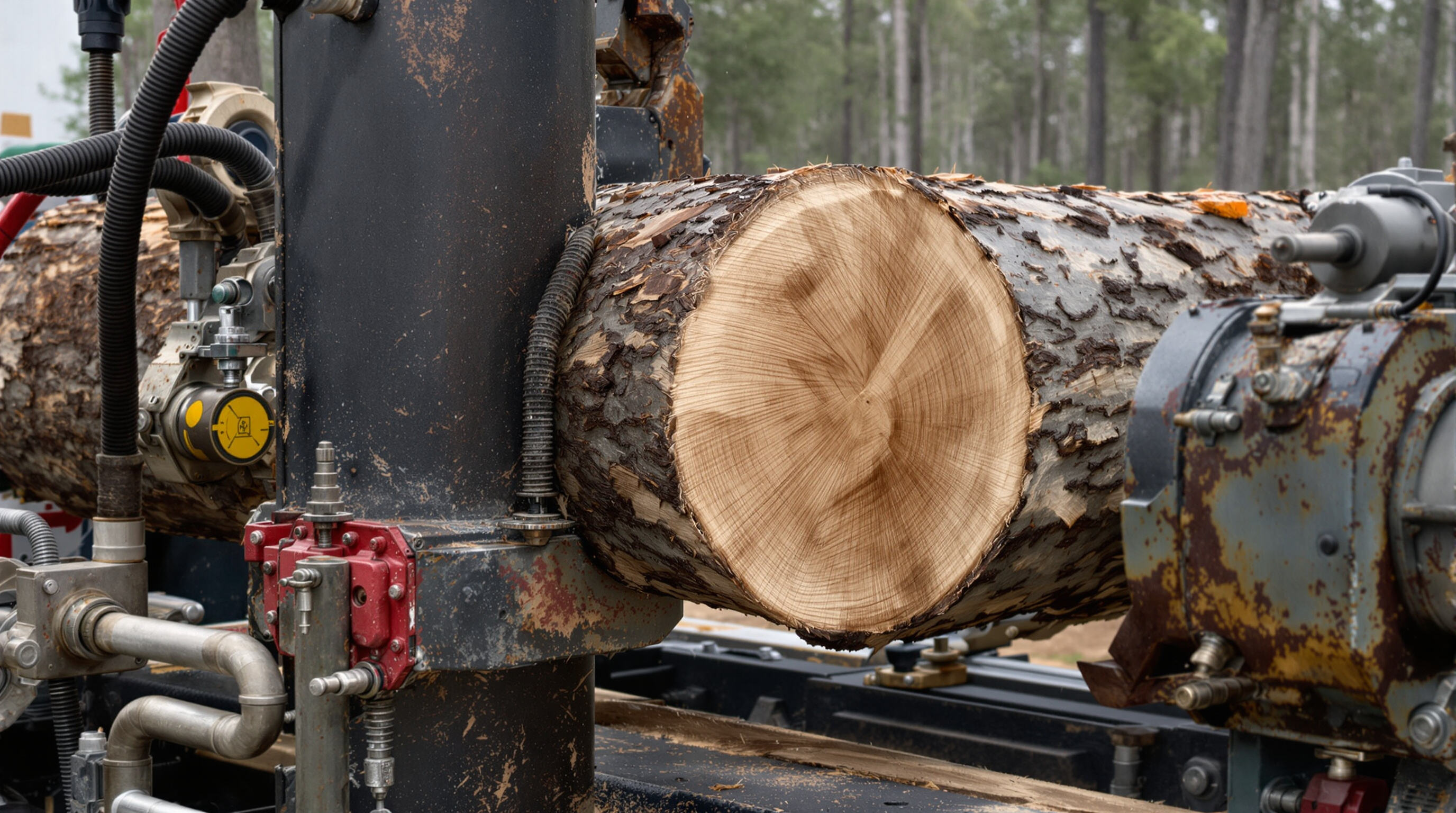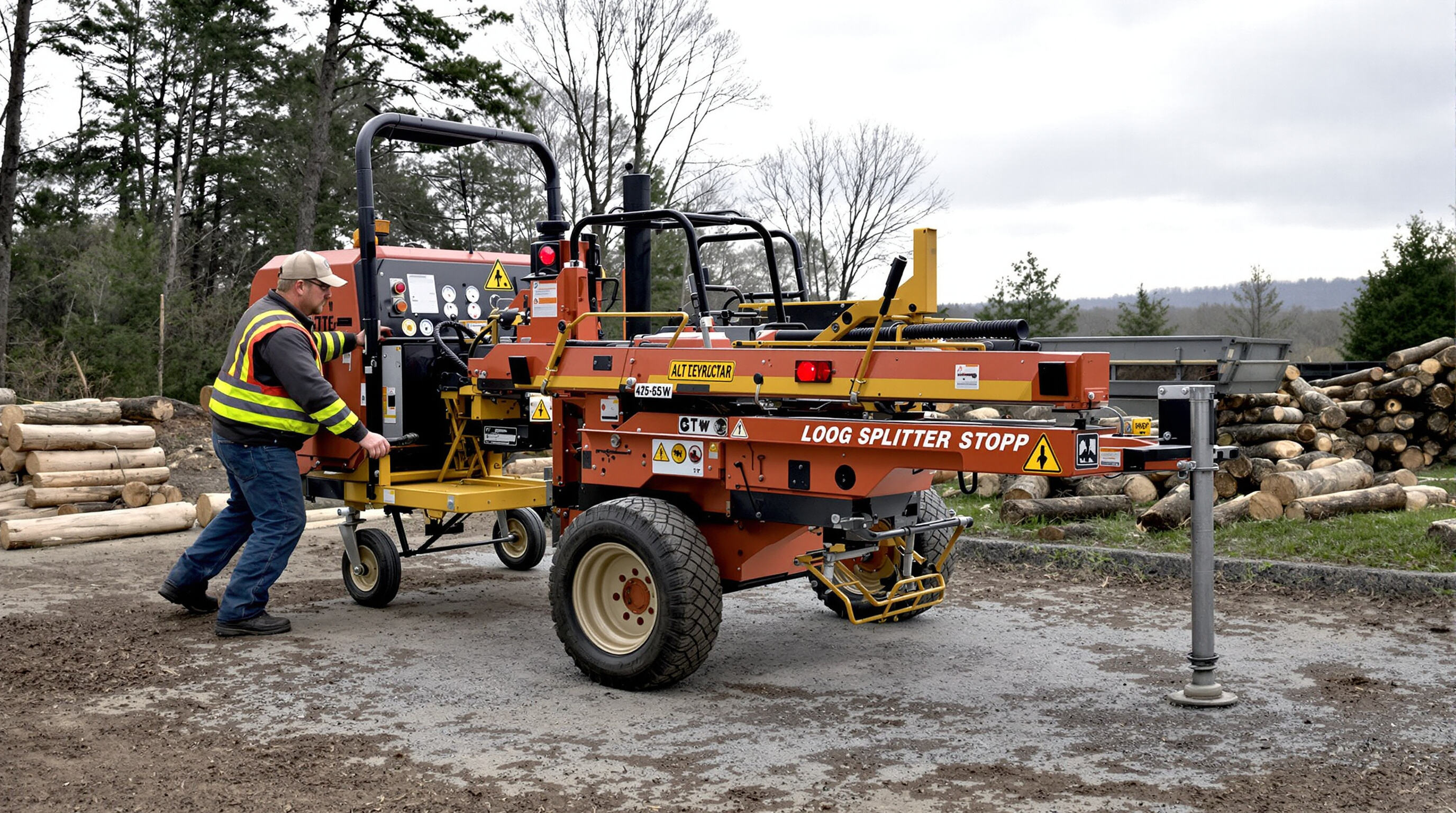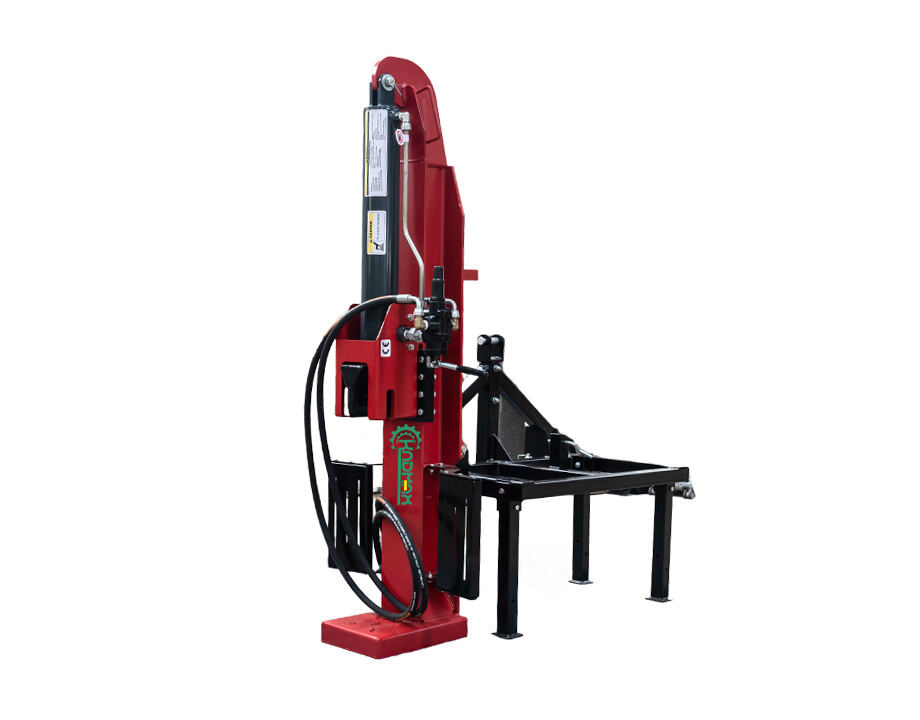Analysis of Splitting Force and Hydraulic System Performance for Log Splitters

Understanding Tonnage and Its Impact on Splitting Capability
Most professional log splitters need somewhere between 20 to 30 tons of splitting power just to get through tough hardwoods such as oak and elm without breaking a sweat. The tonnage rating basically tells us what kind of pressure these machines can push out through their hydraulics systems. A standard 25 ton splitter will typically hit around 3,000 pounds per square inch, but those bigger 30 ton versions crank it up all the way to about 3,600 psi. This kind of muscle makes all the difference when dealing with stubborn knots or ice-cold logs stuck together. On the flip side, folks working with softer materials like pine don't really need such heavy duty equipment since even smaller splitters work just fine for these lighter jobs most of the time.
Comparing Hydraulic System Performance Across Professional Log Splitters
Key hydraulic metrics determine operational efficiency and throughput:
| Metric | Entry-Level (22-Ton) | Commercial (30-Ton) |
|---|---|---|
| Cycle Time | 15-20 seconds | 8-12 seconds |
| GPM Flow Rate | 8-11 GPM | 13-16 GPM |
| Pump Efficiency | 68% | 82% |
Dual-stage hydraulic pumps enhance performance by delivering high GPM (13–16) for rapid cylinder retraction and switching to high PSI (3,600+) during splitting. Systems equipped with pressure-compensated pumps maintain consistent force output despite temperature fluctuations, ensuring reliable performance in variable field conditions.
How Splitting Force Affects Efficiency in High-Volume Operations
A 30-ton splitter processes up to 40% more logs per hour than a 22-ton model under sustained use, according to 2023 forestry equipment trials. However, maintaining peak performance depends on proper hydraulic maintenance:
- Contaminated fluid reduces splitting force by 12–18%
- Worn seals cause 20–30 PSI losses per 100 operating hours
- Optimal fluid temperature (120–140°F) preserves viscosity and maximizes power transfer
Units with thermal relief valves sustain 10–15% higher throughput during 8-hour shifts by preventing overheating and pressure drops.
Durability, Build Quality, and Long-Term Value
Key materials and engineering standards in durable log splitter construction
Heavy duty commercial log splitters come equipped with thick steel frames ranging from 8 to 12mm in thickness, along with powerful industrial hydraulic cylinders meant to handle tough jobs day after day. Look for models that comply with ISO 9001 or ASTM standards since these certifications actually indicate proper welding techniques and thorough stress tests that matter when splitting logs under pressure. The forged alloy wedges used in quality splitters typically measure between 50 and 60 HRC hardness, which means they last roughly three times longer than regular carbon steel when dealing with rough hardwoods. Recent studies from the forestry equipment sector in 2023 back up this claim, showing significant durability advantages over traditional materials.
Performance under continuous use: What defines a commercial-duty log splitter
True commercial-duty units maintain over 95% hydraulic efficiency during 8-hour shifts, thanks to oversized pumps (20+ GPM) and triple-stage filtration systems. Independent testing shows premium models endure 20,000+ splitting cycles before requiring seal replacements—four times the lifespan of consumer-grade units. Integrated thermal overload protection prevents breakdowns during prolonged firewood production.
Maintenance requirements and total cost of ownership
Commercial log splitters do cost around 30% more upfront than residential ones, but they last much longer between services. While home models need attention every 100 hours or so, professional grade machines can go for 500 hours before needing maintenance, which cuts down on downtime by roughly 40% for businesses that rely on them daily. According to a recent study looking at equipment lifecycles in 2024, these industrial splitters actually end up costing about 62 percent less per cord over five years when all repair costs and lost productivity time are factored in. Keeping an eye on things like changing hydraulic fluid regularly and checking those valve assemblies goes a long way toward making sure these machines stick around for many seasons of hard work.
Power Source: Electric vs Petrol for Professional Applications
Electric vs Petrol-Powered Log Splitters: Operational Flexibility and Site Requirements
When deciding between electric and gas powered log splitters, most folks look at where they need to work and what kind of job they've got ahead. Electric splitters work great inside buildings or around town because they run quietly and don't produce any exhaust fumes, which is pretty important if someone wants to stay within local pollution rules. Gas models tend to be the go to option when there's no electricity nearby, especially deep in forests or on farms far from power lines. These machines can move around easily across rough terrain. Most commercial gas engines pack around 10 to 15 horsepower, while electric ones usually max out at about 5 to 8 hp. That extra power makes all the difference when splitting thick hardwood logs that just won't budge otherwise.
Performance Comparison: Gas Engine vs Electric Motor in High-Demand Settings
Gasoline powered splitters really shine when running nonstop, handling anywhere from 15 to 25 tons worth of wood splitting for eight hours or more. This kind of endurance makes them ideal for big operations that need to split massive amounts of firewood day after day. Electric motors have their advantages too they need less upkeep and make less noise overall. But there's a catch. After several hours of constant work, these electric motors typically need cooling down time which cuts into productivity by around 15 to 20 percent across multiple shifts. The good news is recent improvements in brushless motor tech mean some newer electric models can actually keep pace with gas units when it comes to how fast they split softer woods such as pine, getting the job done in under 20 seconds per piece.
Matching Power Source to Business Scale and Usage Frequency
Smaller wood splitting operations that handle around 10 cords or fewer each month can save money on fuel since electric splitters cut costs by about 30 to 50 percent compared to gas powered ones. Plus they require less maintenance overall. When it comes to bigger operations that split over 50 cords per week though, many find that investing in a gas splitter pays off despite the higher initial price tag because these machines can be refilled quickly and keep running without stopping for long periods. A growing number of businesses actually run both types together now. About half of all commercial firewood producers we've talked to have started using electric splitters inside their shops where there's less space and noise concerns matter more, while keeping gas models outside for heavy duty work in the yard. This approach helps them meet regulations better too.
Log Capacity and Splitting Orientation Flexibility
Maximum Log Diameter and Length: Sizing the Splitter to Your Business Needs
Most professional log splitters need to work with standard sized wood pieces. For commercial operations, machines typically need to split logs around 24 inches across and about 30 inches long. This size range works well for splitting common hardwoods such as oak and maple, which account for roughly two thirds of all firewood produced according to recent forestry reports. When dealing with bigger logs than what's recommended, splitter parts tend to wear out faster under the extra pressure. On the flip side, trying to force smaller splitters to handle heavier loads often leads to mechanical failures down the road once they're pushed past their design limits.
Vertical vs Horizontal Splitting: Efficiency, Ergonomics, and Space Considerations
Vertical splitters offer faster processing of large, unwieldy logs–32% quicker according to OSHA ergonomic guidelines–while horizontal models reduce operator bending by 54%. The following table compares key performance factors:
| Factor | Vertical Splitter | Horizontal Splitter |
|---|---|---|
| Avg. Cycle Time | 8.2 seconds | 7.5 seconds |
| Floor Space Needed | 18 sq ft | 12 sq ft |
| Max Safe Log Weight | 220 lbs | 150 lbs |
Horizontal splitters dominate small-scale operations (₧5 cords/day), while vertical systems are preferred in industrial settings processing 10+ cords daily.
Adjustable Wedges and Hydraulic Controls for Versatile Wood Processing
Switching out wedge kits makes all the difference when dealing with different kinds of wood. The 4-way, 6-way, and cone styles boost production rates around 40% give or take depending on conditions. Machines equipped with those 14 to 18 gallons per minute pumps plus pressure adjustments handle both softwoods that need about 18 to 22 tons of force and tougher hardwoods requiring over 27 tons pretty smoothly. What really stands out though are these dual control valves. Operators can clear stuck pieces right from their seat instead of getting up every time something jams. This saves time and actually raises daily output by roughly 20 to 25% during long runs at facilities.
Portability, Safety, and Operational Efficiency

Wheels, Tow Bar, and Weight: Balancing Mobility With Stability
Professional log splitters must balance portability with operational stability. Units under 300 lbs featuring integrated wheels and reinforced tow bars allow easy transport between sites. High-strength steel frames optimize weight distribution, enabling single-operator relocation without sacrificing splitting force, as noted in the 2023 Equipment Manufacturing Review.
Essential Safety Features: Two-Handed Operation, Emergency Stop, and Protective Guards
Modern safety standards require dual-control activation systems, which reduce workplace injuries by 62% compared to single-lever models (OSHA Logging Equipment Report 2022). Commercial units should include laser-cut steel guards and hydraulic pressure relief valves that disengage automatically when obstructions occur.
Cycle Time and Maintenance: Maximizing Uptime in Commercial Firewood Production
| Metric | Entry-Level Splitters | Commercial-Grade Units |
|---|---|---|
| Average Cycle Time | 8-12 seconds | 3-5 seconds |
| Hydraulic Filter Life | 50 hours | 500+ hours |
| Annual Downtime | 18% | <4% |
Well-maintained hydraulic systems reduce unplanned maintenance by 40% and support 25–35 cuts per minute in continuous operation. Top-tier models feature easy-access service points and automated lubrication systems that extend pump life to 8,000+ hours.
FAQ
What is the ideal tonnage for a professional log splitter?
Most professional log splitters require between 20 to 30 tons of splitting power to efficiently handle tough hardwoods like oak and elm. Higher tonnage provides more pressure, which is crucial for overcoming stubborn knots or ice-cold logs.
How does hydraulic system performance vary among log splitters?
Hydraulic performance varies based on key metrics like cycle time, GPM flow rate, and pump efficiency. Commercial-grade splitters generally offer faster cycle times and higher GPM rates for improved productivity.
What factors contribute to the durability of commercial log splitters?
Durable log splitters are constructed using thick steel frames, industrial hydraulic cylinders, and forged alloy wedges. Compliance with ISO 9001 or ASTM standards ensures high-quality construction and durability.
What are the advantages of gas-powered vs. electric log splitters?
Gas-powered log splitters are suitable for remote or outdoor areas due to higher mobility and power, while electric splitters are ideal for indoor use where low noise and emission-free operation are prioritized.

